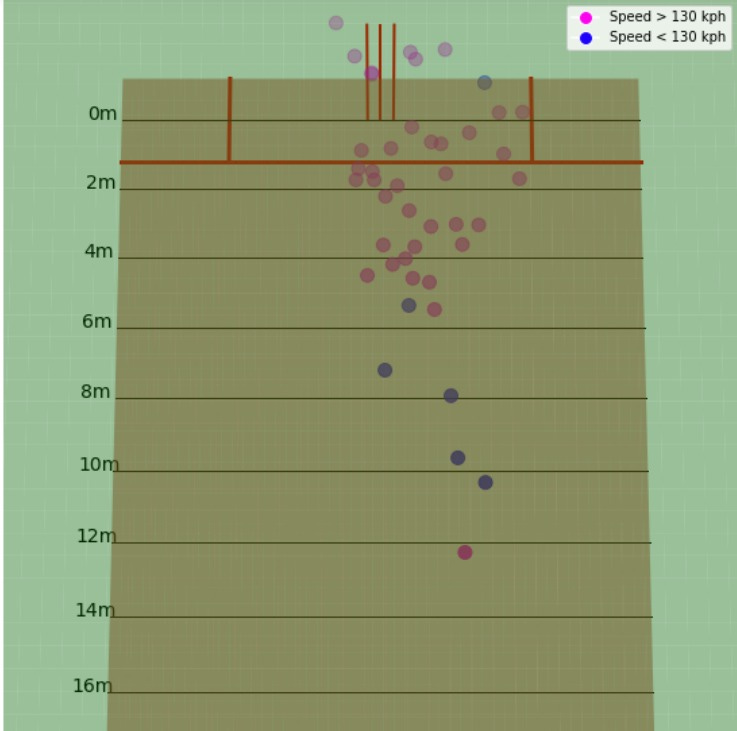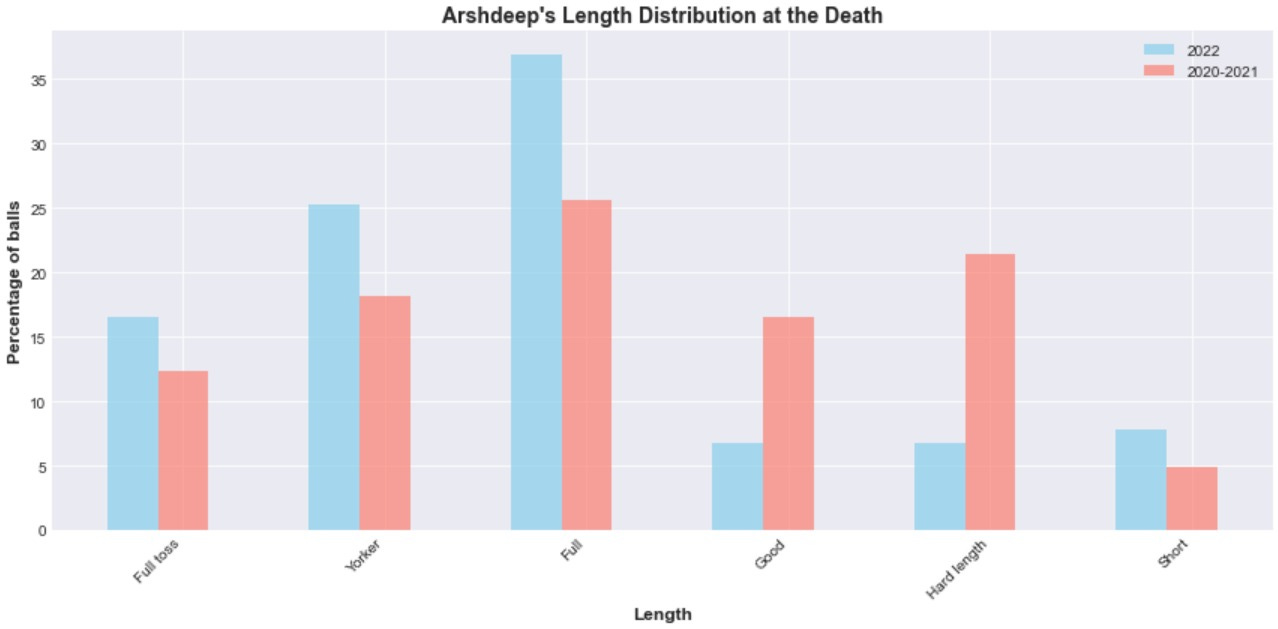What's up with Arshdeep Singh?
A story of how his ability has tailed away, but not how you think it has
On spicy New York pitches, Arshdeep Singh spiced things up for both Ireland and Pakistan.
Before India’s match against USA, the average pacer’s economy rate at this venue was 5.16, but Arshdeep’s was 8.25.
So what’s up with him?
This is a tail of two halves (pun intended), beginning in 2020 with his breakthrough season with the Punjab Kings in the Indian Premier League.
As Arshdeep developed in the following two seasons, so did his reputation.
He became a household name as he evolved into a proper top-tail bowler, bowling more than 15 overs in the powerplay each season.
His economy rate in this phase read as 6.95 at the end of this period, and he was just as economical overall.
7.55 to be exact; the 5th best for pacers who bowled at least 350 deliveries.
His IPL2022 death economy rate of 7.49 was only second to Jasprit Bumrah’s, but things slowly began to tail away for Arshdeep from here.
He was both economical and a wicket-taking option during the 2020-21 period, but he sacrificed the latter that season to be better at the former.
Whereas he took wickets every 8.64 balls at the death in the 2020-21 period, he took one every 25.75 balls in IPL2022, going from the 5th best pacer to the 5th worst in this phase by this metric.
A similar trend is seen in the powerplay: he was the 4th highest wicket-taker in IPL2021, but the 7th worst in the following season.
This brings us to the second half of the tail, where his ability has really tailed away in the last two seasons.
Arshdeep's taken a wicket at the death every 10.94 balls in this period, but it’s coming at an economy rate of 10.41, the 6th worst amongst pacers who bowled at least 120 balls.
It's the same story in the powerplay: wickets every 22.62 balls compared to every 36.33 balls in IPL2022, but at economy rates of 9.82 and 8.52.
Still haven’t figured out what’s up with him?
Since last year, Arshdeep hasn’t been consistent in what he’s trading off across phases.
Last year, he was only economical at the death and a wicket-taker in the powerplay, but this season, it was vice versa.
So what’s up with him?
A major reason for his powerplay success in IPL2021-22 was that he bowled a higher percentage of good and back of a length deliveries.
It went down in IPL2023 by 13.87% as he bowled bad balls more frequently, explaining his economy rate of 9.82 in this phase.
But this year, it went up by 13.27%, helping his economy rate to go down to 8.52.
And his success at the death during IPL2022 was thanks to a yorker-heavy strategy.
You can tell he's a yorker merchant by how many half-volleys (2-4 meters from the stumps) he bowled, especially to the RHB.
But it paid dividends for him that year, as he had a yorker success rate of 36.11%.
The average yorker success rate at the death that season was 32.03%; anything above 35% is great, while 40% and above is elite.
Full tosses and half volleys count as failed yorker attempts, and Arshdeep bowling a lot of the latter to the RHB indicates he likely thought his left-arm angle made the strategy effective against them.
We all know how volatile this strategy is though.
But contrary to popular belief, it's not why his ability has tailed away; why would it if he's shifted away from it?
He's not just attempting fewer yorkers now, but also bowling hard lengths more frequently.
But a yorker-heavy strategy doesn't guarantee that you're economical.
The variance in the economy rates has to do with the type of yorker he’s bowling.
His current best friend in the wide yorker is an attacking option, while the stump line yorker he ended his friendship with is an economical option.
But Arshdeep’s current strategy isn’t a first time for him; it's straight out of his IPL2020-21 playbook.
Because Arshdeep didn't bowl enough deliveries on lengths that are better wicket-taking options than yorkers, he took only 4 wickets at the death in IPL2022.
So how can he be economical and a wicket-taker like he was in 2020-21 once again?
Rene Ferdinands would say to run in faster from the same angle of his run-up.
His study found a correlation of 0.58 between run-up speed and release velocity, and other studies concluded that about 15-20% of release speed is determined by run-up speed.
A faster run-up increases ball velocity, which pitches the ball fuller from the same angle of release.
Shane Watson would add to this by saying that to bowl your intended length, you must have fluid control over your run-up speed.
He says that too much momentum makes the ball pitch fuller than intended, and too little means it’s shorter, and Arshdeep would second all this.
In an ESPNCricinfo interview during IPL2022, he said he became consistent with the lengths he wanted to bowl by “understanding where your ball will land if you run at this particular speed at this particular angle.”
It's how his yorker-heavy strategy was so successful that season, but currently, the ball isn't pitching where he wants it to.
He's overpitched a lot so far this T20 World Cup in search of swing with the new ball, and was often way too short this IPL since he doesn't have fluid control over his run-up speed like he used to.
That is what's up with Arshdeep Singh.
Thanks to @RishikeshwaranCA for computing the data



















